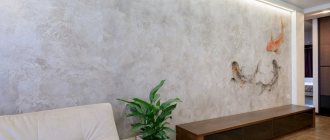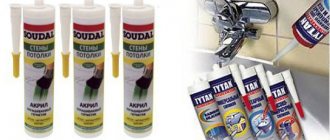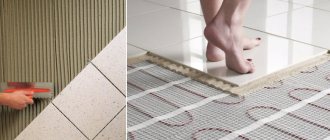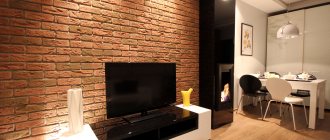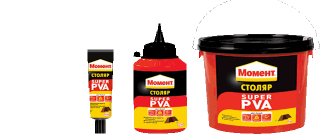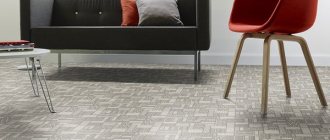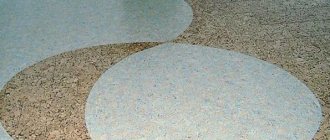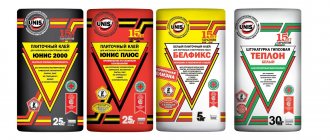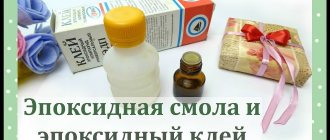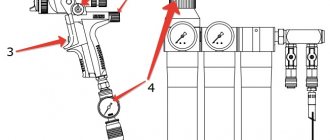Advantages
Universal acrylic glue very firmly bonds the glued parts to the surface. Adhesion is very high. It is capable of gluing almost anything: glass, ceramics, metal parts. There is a uniform spreading of the glue onto the smeared area, which increases the bonding force.
The presence of two components in the glue with a high degree of adhesion is another big plus. Such qualities allow you to use the product on uneven surfaces and not tire yourself with sterile cleaning of parts.
Resistance to moisture - the product is an excellent sealant. Even if you put them on par with silicone sealants, acrylic adhesive can outperform them tenfold.
Latex mixtures have a high level of penetrating properties, even when compared to acrylic pva glue. The products are very resistant to atmospheric and weather conditions, which plays a huge role in their popularity.
In the process of working with different types of mixtures, there are also disadvantages. They are eliminated through all sorts of experiments with the composition and so on.
Advantages and disadvantages
Among the advantages:
• moisture resistance;
• evenly distributed when applied;
• provides reliable connection even on uneven surfaces;
• resistance to aggressive environments and atmospheric phenomena;
• a large assortment of different types, which makes it possible to choose the most suitable option;
• can be used for different types of materials.
When using, it is worth considering the disadvantages of the adhesive composition. These include:
• an unpleasant odor is heard during use;
• rapid setting makes it impossible to correct the part;
• thin gluing seam.
Types and technical characteristics
The glue in question is made from a synthetic substance - acrylic. Compositions based on it can be one-component or two-component. The first are ready-to-use substances; in the second case, the composition must be diluted with water.
According to the main substance and method of hardening, acrylic-based adhesives can be of several types.
- Cyanoacrylic adhesive has a one-component transparent composition and is used for various materials. It is characterized by very fast setting.
- Modified acrylic adhesive - a mixture of acrylic and solvent is widely used in construction.
- An acrylic composition that hardens only when exposed to UV waves of the required length. Used for gluing glass, mirrors, screens and other transparent materials.
- Latex-based acrylic adhesive is the most popular substance, odorless, absolutely harmless and fireproof. This is the most universal repair and installation composition, capable of adhering to any texture. Therefore, it is used when laying linoleum and other floor coverings. Due to its water resistance, it is used in bathrooms and other places with high humidity.
- Water-dispersed acrylic adhesive has the safest composition, hardening after moisture evaporates.
- Acrylic tile adhesive is used for fixing ceramic tiles, artificial flexible stone, quartz sand and other facing materials.
Cyanoacrylate glue: types of substance
One-component transparent adhesive with cyanoacrylate characterized by very rapid polymerization under pressure. After drying, this composition forms a thin but durable film between the joined elements. These characteristics make the adhesive an optimal solution for metal and synthetic materials, including parts for medical equipment.
Cyanoacrylate glue can be one- or two-component
The most commonly used second two-component adhesive is at home. Liquid compounds, due to their reduced viscosity, are able to close gaps up to 0.05 cm, and more viscous substances can seal a gap of up to 0.03 cm. Two-component adhesives are excellent for adhesion of rubber and leather parts, as well as products made from wood chips.
Important! The most reliable and durable connection is formed in humidity conditions from 40 to 70%. If it drops to 30% or less, the seam will harden for a very long time, and if the air humidity is above 80%, then the glue polymerization process occurs extremely quickly, which reduces the reliability of the joint. Reducing or increasing the temperature by 10 degrees will slow down or speed up the adhesion process of the glue by half. Optimal conditions for working with cyanoacrylates are from 20 to 24 °C.
Acrylic adhesive for different types of materials
- For facing tiles. Used for working with tiles and gluing them to the floor, ceiling or walls. It is even used when working with polyurethane and polystyrene foam materials. It is used as a putty material for filling irregularities up to 5 mm in size, attaches well to concrete, brick and glass, is waterproof and has low shrinkage rates.
- Ceiling composition. Used when working with tiles and as a finishing putty. Water resistant.
- Glue for glass wallpaper. Used when working with paper and PVC wallpaper. It is resistant to moisture, does not require mixing the composition before use, and glues well and quickly. After drying, the structure of the glued fabric is not disturbed.
- Contact acrylic adhesive. Such compositions are characterized by long-lasting viscosity, stickiness and transparency, which appears after drying.
- Acrylic floor adhesive. Used for gluing carpet and linoleum. Creates a durable film, does not peel off if the floor is deformed, and retains elasticity after drying. One type of linoleum adhesive is Polin 104
- Universal. This composition is relevant for working with wallpaper, film materials, both fabric and paper based, as well as for gluing borders to wallpaper. The film that forms after drying is highly resistant to atmospheric conditions.
Since some building materials, due to their specific nature, are difficult to glue, special-purpose adhesives are used to work with them. Special components are added to their composition, which improve the quality of bonding and gluing.
Acrylic Adhesive for Flexible Stone
This composition is made on the basis of acrylic resins. Its varieties can be specialized or universally applicable. To work with flexible stone, a water-dispersion composition is used, which is distinguished by its versatility and safety of use.
Also relevant may be suspension adhesives, which, due to the fact that sunlight promotes drying, are rarely used in everyday life. The latex composition interacts with the most controversial materials. Such mixtures are non-toxic, resistant to moisture, easy to use, and therefore are often used for gluing walls. This glue has high penetrating ability.
Due to their high elasticity, acrylic adhesives improve the quality characteristics of silicone sealants. They are able to adapt to unfavorable environmental conditions, which explains the reason for their popularity when carrying out various types of work.
How to dissolve cyanoacrylate second glue and how to remove excess from the surface
When working with cyanoacrylate-based adhesives, there is a possibility of adhesive spilling on surfaces that do not need gluing. This usually happens due to a poorly prepared workplace. Therefore, the question of how to remove cyanoacrylate glue is extremely relevant. Unfortunately, at this time, a means has not yet been invented that makes it possible to dilute or dissolve the adhesive for further removal without damaging the surface. Since it is not known how to wash cyanoacrylate glue from the surface, you must work with it carefully.
It is possible to remove unnecessary glue from the surface, but only mechanically. You can try simply rubbing the stain away. This can be done if the material is durable and does not break. You need to remove it with a sharp knife, but you should work carefully and carefully so as not to damage the integrity of the surface. You can try to wipe off any remaining glue with white spirit. This allows you to dissolve small particles on the fabric and thus remove the powdery layer of glue.
How to wash cyanoacrylate glue from hands or skin? In this case, it is useless to look for something to dissolve cyanoacrylate glue. It will not be possible to wash off, clean or scrub off the substance, as it will be removed along with human skin. There is no point in trying ordinary solvents for paints and varnishes, gasoline and kerosene, vegetable oil and alcohol. The best option is to wait a few days until the adhesive begins to peel off on its own, only then can you begin to remove the adhesive without harm to the body.
It is almost impossible to clean, wash off or wipe off cyanoacrylate glue from hands or skin.
You can try acetone as a cleaner, but use it very carefully when removing adhesive from leather, plastic, and other organic surfaces. Before dissolving the second glue, you need to remember that cyanoacrylate is inert, which means it does not interact in any way with substances such as gasoline, oil, ethanol, and many other common solvents.
Important! The instructions for use of cyanoacrylate adhesive CA-500.200 and many other similar products mention "Dimexide" as an adhesive remover. This substance is extremely toxic and has an unpleasant odor, so it is better to think before scrubbing cyanoacrylate glue with this composition.
Composition of dispersion adhesives
If you know the composition and mechanism of action, you can easily select the option that you need on the market. You should not rush to buy a product if its advertising seems attractive enough.
This type of adhesive contains tiny resin particles that do not dissolve in water. In solution they are suspended. The consistency of dispersion glue varies. It can be either thick or pasty. Before work begins, it usually has a milky white tint. Look at the photo to see what dispersion glue looks like.
Glue laminate
As soon as the water evaporates, the adhesive composition polymerizes, as a result of which it becomes almost transparent. Excess dispersion adhesive must be removed with a damp cloth before the composition hardens. If it dries, then this cannot be done: in this state it is characterized by water insolubility.
The adhesive composition hardens in the following way: water transfers to the product or evaporates through the adhesive joints. This explains its popularity when it is necessary to glue wood, wallpaper, carpets, fabrics, paper, cardboard, since these materials absorb and allow moisture to pass through. In addition, it is used for tiles and linoleum.
Application, precautions
When buying glue, take into account the following nuances:
- Removal of dirt from hands and tools is carried out with water.
- Hardened contaminants are removed with a solvent.
- The consumption of raw materials depends on the thickness of the applied layer, preparation of the base, and the skill of the worker.
- The work is carried out in protective equipment; you must wear gloves on your hands to prevent contact of the product with mucous membranes.
- Allergies can be avoided if work is carried out in well-ventilated areas or equipped with a ventilation system.
- Do not deviate from the instructions when working, immediately take into account the time for adjustments and correction of defects.
- Storage is carried out according to the information on the packaging, away from children.
Features of the use of acrylic sealants
No special knowledge or tools are required to apply the material. It is only important to carefully prepare the base: clean it from grease, dirt, peeling coatings, then dry it well. If the seam is thick and wide, it is worth purchasing a sealing polyethylene cord in advance or filling the joint with another sealant. This will make the connection more reliable, reduce thermal conductivity and reduce sealant consumption by 40–70%!
Acrylic can be applied even without using gloves, as it does not irritate the skin of the hands. It is strictly not recommended to dilute it with water or any solvent - this will reduce the quality and cause rapid cracking of the seam. For application, you can use a special gun into which cartridges and tubes are conveniently inserted. It is better to spread sealant from a jar or bucket with a small spatula; from a tube, simply squeeze it out, directing the thin spout to the desired place.
After application, the product can be given any shape within 10–15 minutes. Then a polymer film will begin to form and repairing the seam will be difficult and impractical. Curing of the sealant lasts 24 hours, but at low temperatures the process may take 2 days.
We recommend: How to glue iron-on stickers to clothes and how to make them yourself?
To increase your work efficiency, you should consider the advice of professionals:
- if sealing is carried out in the bathroom, you must wait at least a day before using the surface, otherwise the top layer of the seam will blur;
- Do not touch the joint until it is completely dry: the surface film may be damaged;
- The humidity and temperature in the room cannot be changed until the polymerization of the sealant is completed;
- After opening the package, you will have to use the entire composition, otherwise during storage it may lose its basic properties.
What kind of jobs is sealant best suited for?
Acrylic is suitable for various jobs in everyday life, at construction sites, and in repairs, but it is optimal to apply it to low-moving or fixed joints that are not regularly in contact with moisture. Examples of work with this composition:
- repair of cracked furniture;
- restoration of parquet, laminate;
- linoleum gluing;
- installation and repair of doors, windows, balcony blocks;
- installation of skirting boards, baguettes;
- sealing tile joints.
Sealing tile joints with acrylic sealant
Consumption of funds
To calculate the required amount of sealant, you need to know the dimensions of the future seam. You can multiply the depth of the seam by its width, resulting in the approximate volume of product per meter in grams. If the joint is triangular rather than square, the final figure is divided in half. On average, 250 g of sealant is enough for 10 meters of not too thick seams.
Removing traces
It happens that the product gets on various surfaces in the house. It will not be difficult to remove it before it hardens: just wash the base thoroughly with soap and water. If the composition has hardened, you can use a sharp knife or razor. Remove the product layer by layer, cutting it off carefully so as not to damage the product. The remains are rubbed down with fine sandpaper, steel wool or pumice. Remove sealant from delicate surfaces with a wooden scraper. After finishing work, wash the item with soap and other detergent and dry it.
Uncured traces of sealant can be easily washed off with water.
Popular brands
There are different sealants in stores, the most popular are the following compositions:
- “Universal” from Novbytkhim. An inexpensive product based on acrylate dispersion and mineral filler. After drying, it forms a moisture-resistant, rubber-like white seam that does not turn yellow over time. The sealant is non-toxic and can withstand temperatures of –30…+70 degrees. Designed for repair work indoors and outdoors.
- Zigger Acryl. Plastic, elastic means for compacting various substrates. Includes a freezing point depressant additive. It is thixotropic and can be applied to vertical bases and ceilings.
- "Moment Acrylic Universal". It is used for strengthening and sealing cracks and crevices in windows, for sealing joints between plumbing fixtures and floors and walls. Can be applied to the junctions of metal sinks and walls, countertops in the kitchen. Retains properties at temperatures of –50...+150 degrees, is neutral with respect to alkalis, oils, and remains durable for several years.
- Belinka Beldom Acryl. Acrylate sealant that is suitable for all building materials. Sufficiently elastic, withstands deformation within 5–10%! Does not wear out, is resistant to sunlight and weathering.
- Loctite PL-S50. Universal frost-resistant composition based on acrylic water dispersion. Designed to strengthen weak joints between concrete, brick, wood, plaster, and ceramics. Ideal for grouting cracked surfaces. Suitable for painting and plastering.
- Makroflex FA. Freeze and thaw resistant sealant. Suitable for external and internal work. The seam can be painted an hour after drying. Can be used for all types of seams with slight deformation and stretching.
- PENOSIL Premium Acrylic Sealant. A universal water-based acrylic composition used for filling joints and cracks in low-moving joints. It is odorless, easy to apply, and after drying it can be sanded and coated with paint or varnish. It is quite moisture resistant and can easily withstand contact with water 5 hours after use.
We recommend: Glue for PVC pipes: overview of varieties and selection of the best + instructions for gluing
There are other acrylic-based sealants in construction stores: Titan, Krass, Master Tex, Pufas, Kim Tek and others. There is no need to save money and buy the cheapest composition. Products from well-known brands are of consistently high quality and highly effective. Working with acrylic sealants is easy and convenient; they will become reliable helpers in the home and on construction sites.
